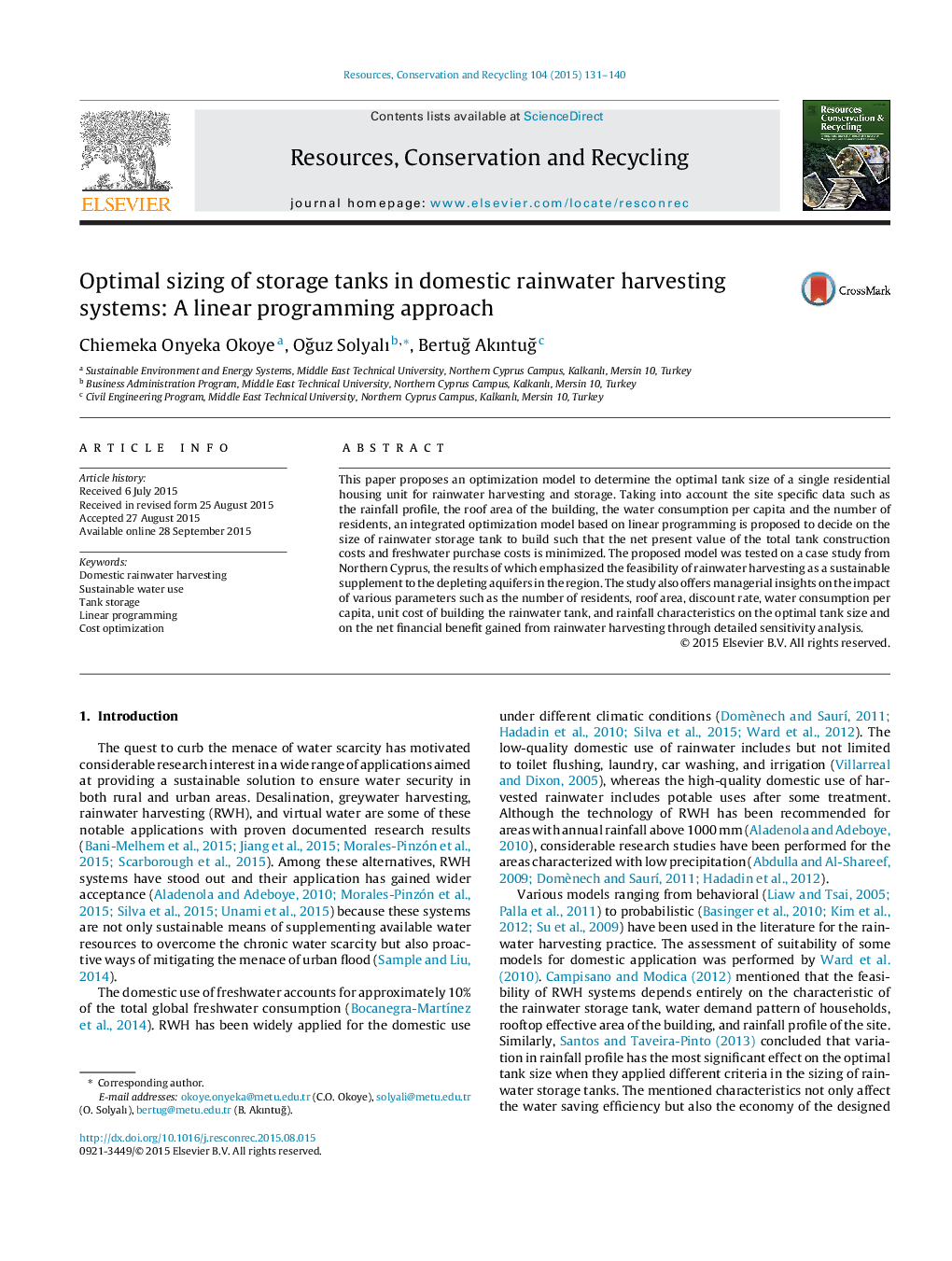| Article ID | Journal | Published Year | Pages | File Type |
|---|---|---|---|---|
| 1062816 | Resources, Conservation and Recycling | 2015 | 10 Pages |
•We propose an optimization model for rainwater harvesting at a residential unit.•We use the model to determine the optimal rainwater tank size.•Proposed model is tested on a case study.•We assess the impact of important parameters on tank size and financial benefit.•Proposed model is an effective tool for decision-making in rainwater harvesting.
This paper proposes an optimization model to determine the optimal tank size of a single residential housing unit for rainwater harvesting and storage. Taking into account the site specific data such as the rainfall profile, the roof area of the building, the water consumption per capita and the number of residents, an integrated optimization model based on linear programming is proposed to decide on the size of rainwater storage tank to build such that the net present value of the total tank construction costs and freshwater purchase costs is minimized. The proposed model was tested on a case study from Northern Cyprus, the results of which emphasized the feasibility of rainwater harvesting as a sustainable supplement to the depleting aquifers in the region. The study also offers managerial insights on the impact of various parameters such as the number of residents, roof area, discount rate, water consumption per capita, unit cost of building the rainwater tank, and rainfall characteristics on the optimal tank size and on the net financial benefit gained from rainwater harvesting through detailed sensitivity analysis.
